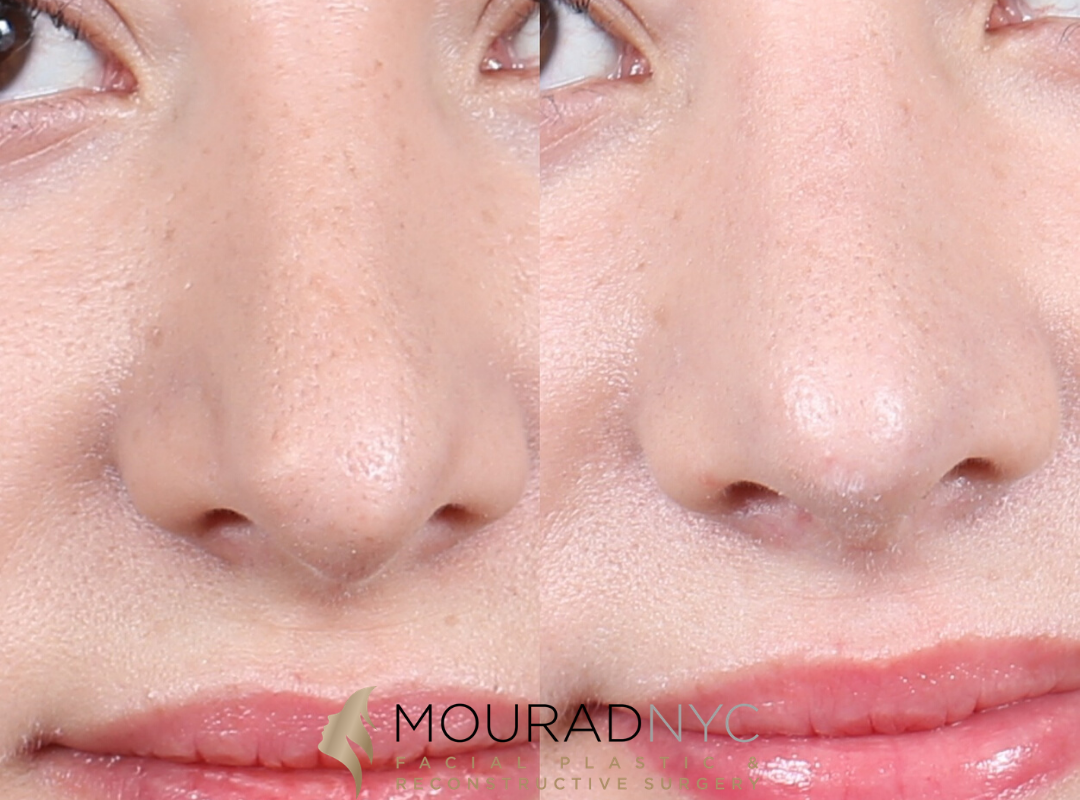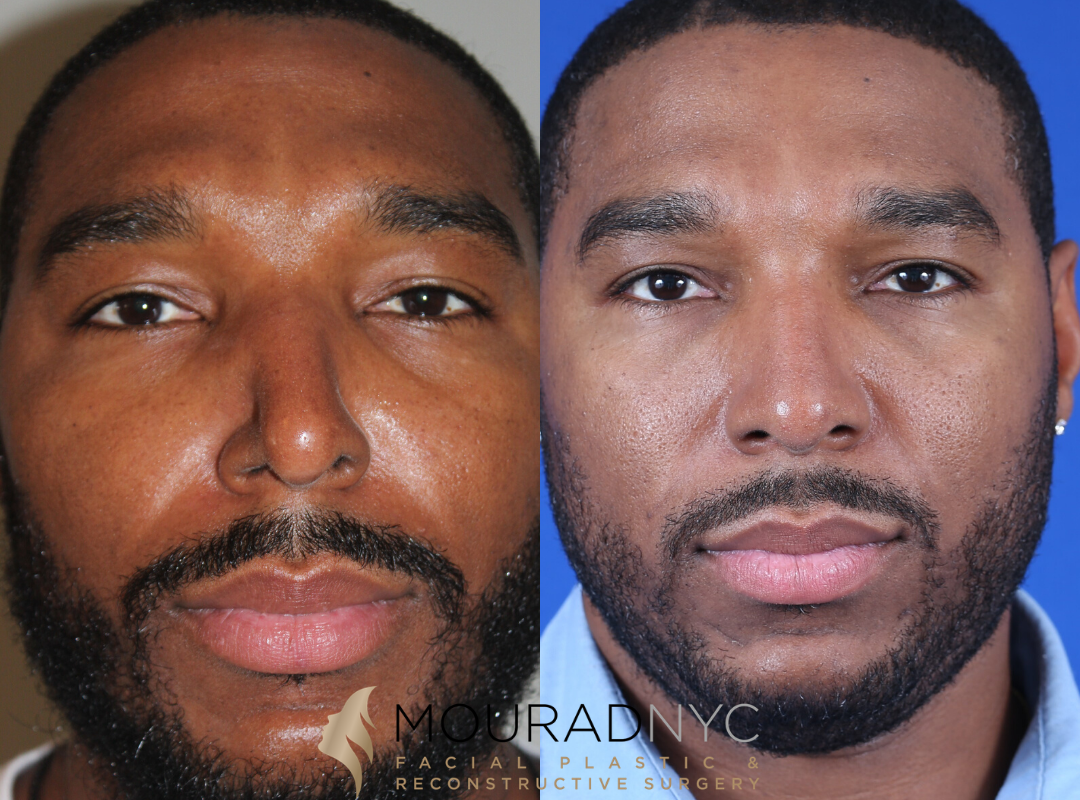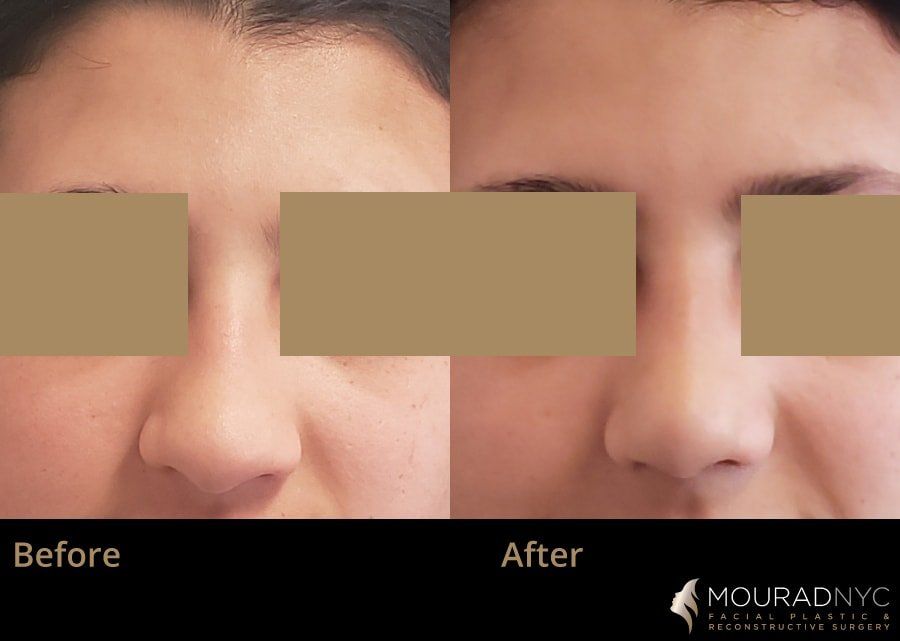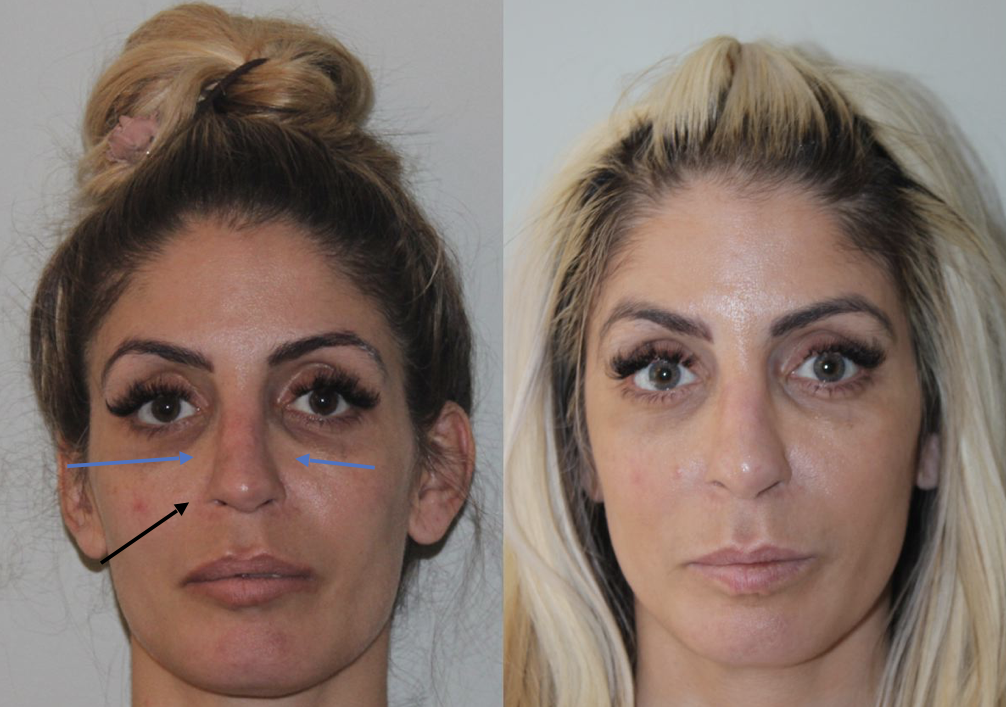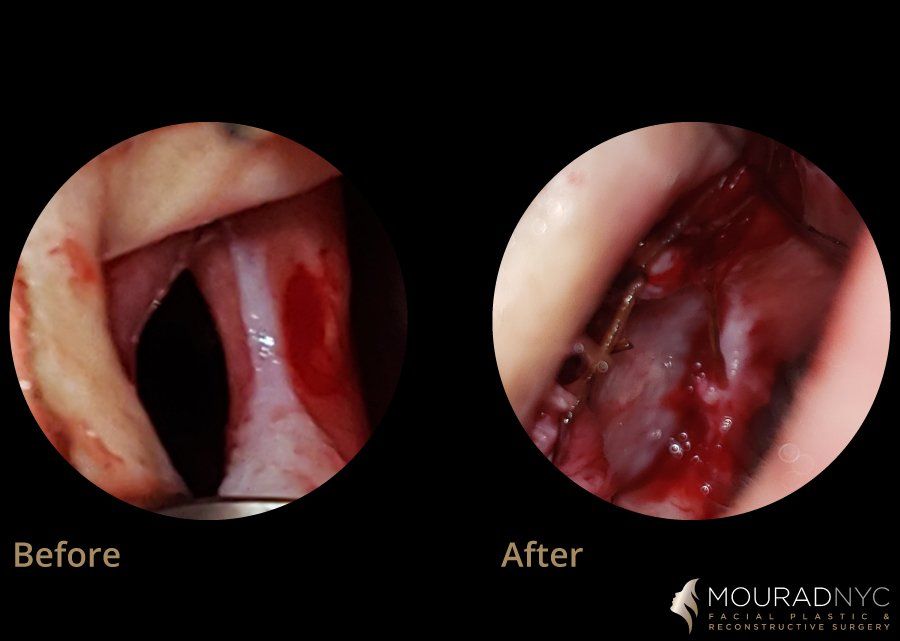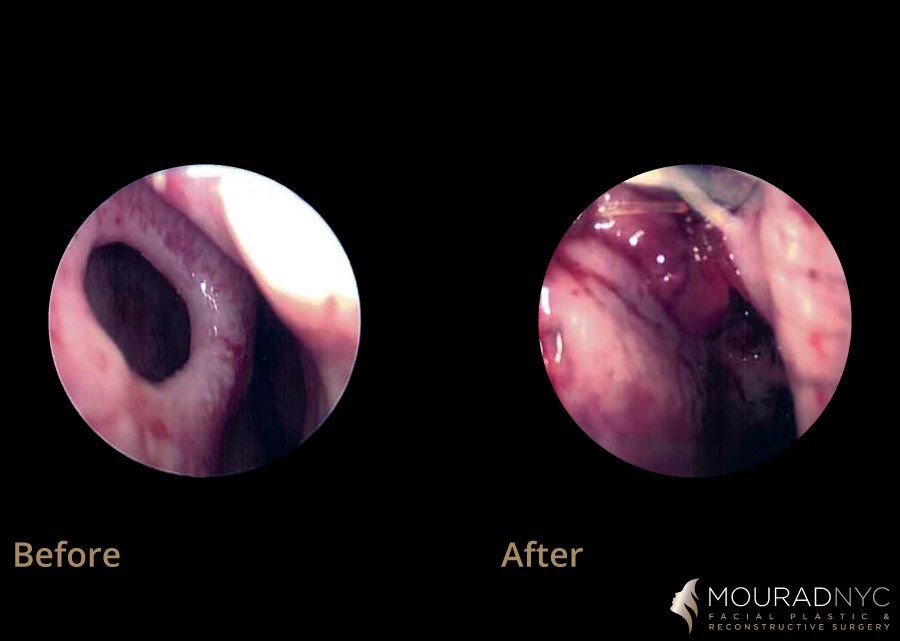Before and After Female Revision Rhinoplasty
This young female patient that had a revision rhinoplasty with Dr. Mourad using her own rib. She came in 9 years after a primary rhinoplasty with another surgeon in New York City. She complained about her nose looking “deformed and unnatural”. The photo on the left shows her before photo. As you can see, she has asymmetry of her nasal tip. A functional and cosmetic surgeon Dr. Mourad looks at the “tip defining points”. These can best be appreciated by the reflective white light points at the tip. In her photo on the left, you can see that the patient’s right light point is higher then her left point. This was because her nose was twisted, with malformation and poor positioning of her cartilages.
Many years ago, when she had her original surgery, they removed cartilage that caused asymmetrical scarring and positioning of the cartilages as the years wore on. Over time, her nose began to droop looking unnatural. In her after photo on the right, you can see that her tip points are symmetric, with symmetric casting of light and shadows. Using her rib through a minimally invasive approach and access through a 1.2 cm incision, Dr. Mourad was able to recreate the natural contours of the nose. This photo is only 1 month after surgery, with still some swelling that should come down with time.
